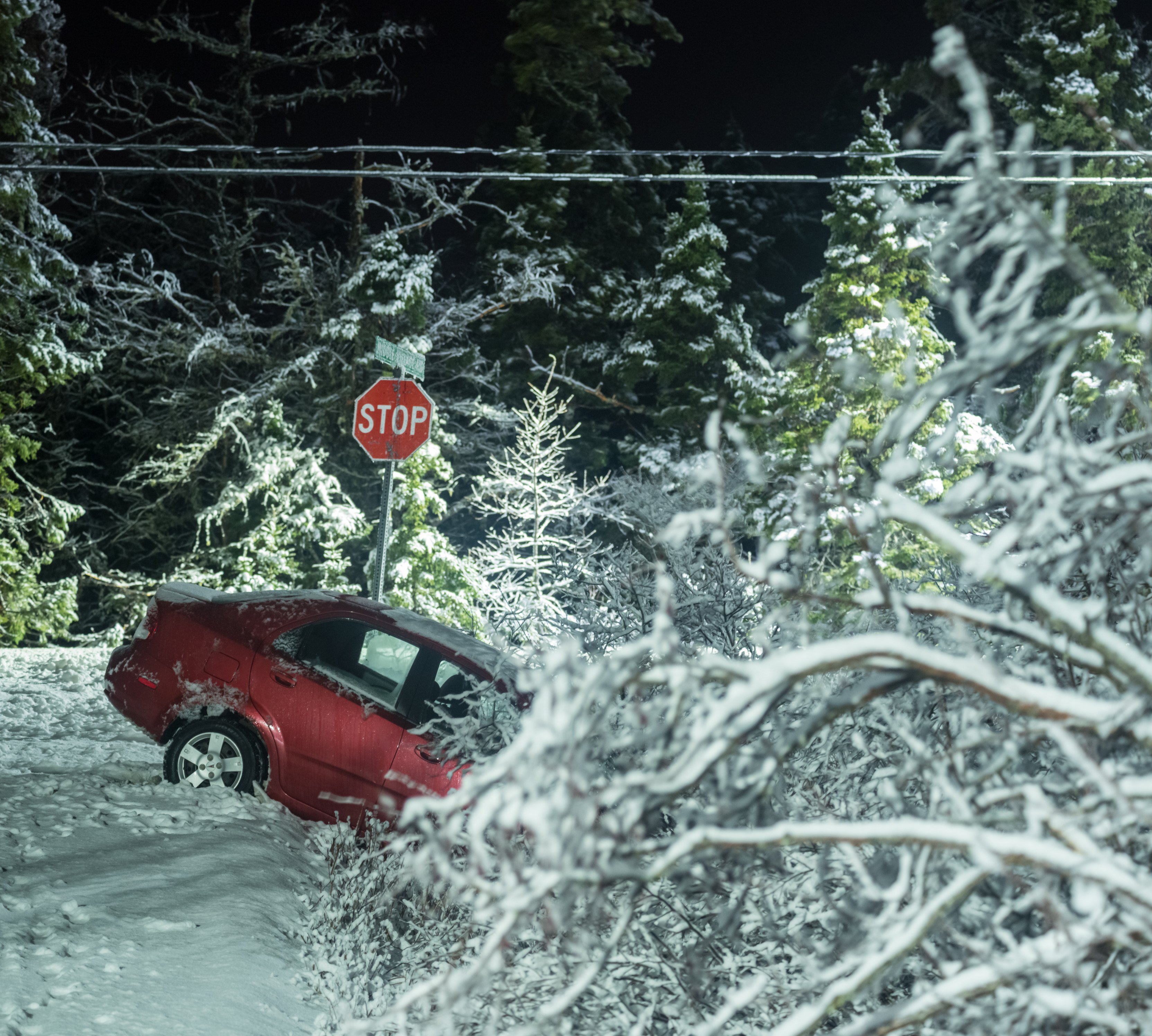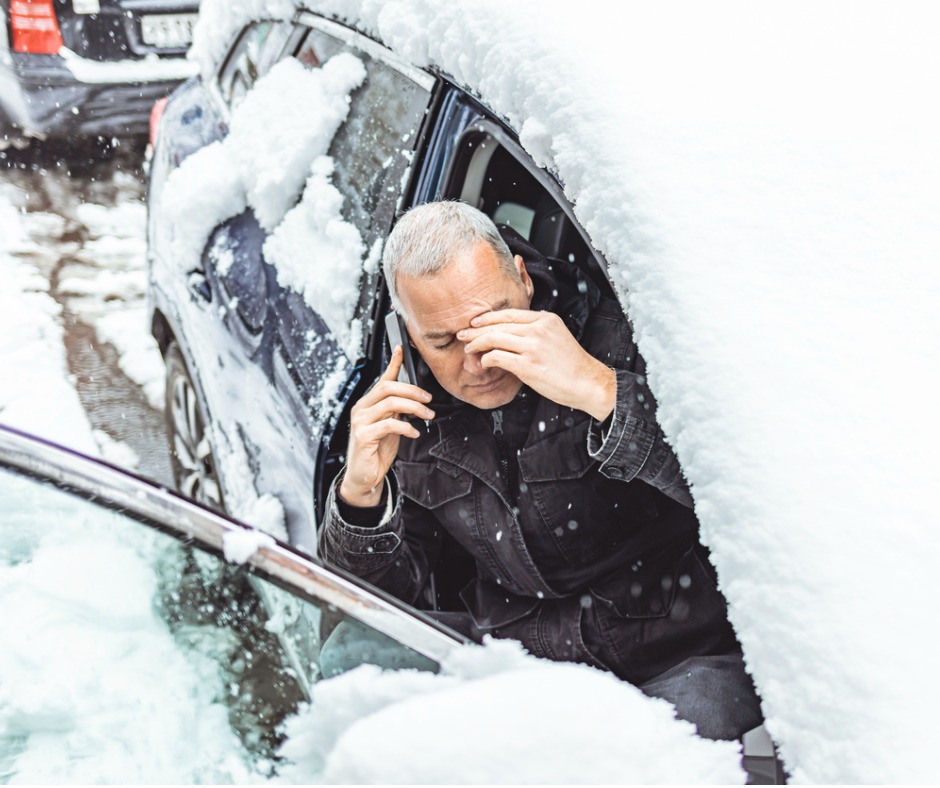How to Prepare for an Ice Storm
Winter storms are often brutal, especially those that bring heavy ice. Homes, cars, and roads can take quite a beating from freezing rain.
Ice storms can tear apart roofs, topple trees, cause power outages, and cut off heat, while also creating a higher risk of car accidents on icy roads, hypothermia, and even carbon monoxide poisoning from improper use of generators.
A little preparation, though, can go a long way toward protecting your home, car, and family from ice storms.
Stay informed. Keep an eye on local weather reports throughout the winter. In addition, your utility provider may offer winter storm alerts via email or text message. If an ice storm is approaching your area, stay tuned to local news for updates.
Remove dead trees and prune branches in the fall. Healthy trees can usually withstand the winter elements, but rotted or weak trees are hazardous—their limbs could snap off during an ice storm. So, cut down diseased trees before winter arrives. Pruning trees that are near your home also reduces the risk of a limb striking your house during an ice storm. Professional tree trimming costs an average of $200 to $760, depending on the number of trees and their height.
Keep fresh batteries on hand. If the power goes out, you don’t want radios and flashlights to run out of juice. Stock up on food and water. Ensure that you have enough drinking water and non-perishable foods for your family and pets for at least three days.
Keep pipes from freezing. Having a pipe freeze and burst can be a huge—and costly—headache. Depending on the extent of the damage, cleanup can cost tens of thousands of dollars. Make sure your pipes can withstand the cold by insulating pipes in your attic and crawl spaces (exposed pipes are most susceptible to freezing) and keep some kitchen and bathroom cabinet doors open to allow warmer air to circulate around the plumbing.
Prevent ice dams on gutters and roofs. If your gutters or downspouts are blocked, ice dams can form and cause water to leak inside your home. Therefore, keep your gutters clear of debris, such as leaves and bird’s nests. You can use a gutter scoop to remove tough debris. It’s also a good idea to hire a professional roofer to perform an inspection in the fall, since ice dams can form on cluttered roofs and damage shingles.
Protect yourself (and guests) from slips and falls. Icy ground outside your front door, on your sidewalks, or on your driveway can be treacherous—and it can lead to a major insurance claim if someone slips and gets injured on your property. Pretreat surfaces with anti-icer prior to a storm and use a deicer, such as salt, to melt any ice formations.
Use a generator safely. If your house loses power during an ice storm, running a generator can keep your home’s electric system humming. But make sure to place your generator at least 20 feet away from your home to prevent carbon monoxide poisoning—from 2005 to 2017, more than 900 people died of carbon monoxide poisoning while using portable generators. The Red Cross has a guide to generator safety tips.
Winterize your vehicle. Have a mechanic give your car or truck a tune-up to before winter. Make sure they check your vehicle’s battery, antifreeze, ignition system, heater, headlights and hazard lights, exhaust system, brakes, defroster, and oil. Also, keep an ice scraper, warm gloves, and an first-aid kit in your vehicle.
Drive safely. You should stay home during an ice storm—sloppy road conditions contribute to nearly half a million crashes and more than 2,000 road deaths every winter. But if you must drive, stay on main roads while avoiding bridges whenever possible (bridges freeze before other road surfaces); maintain a safe following distance of three to four car lengths between your vehicle and the vehicle in front of you; and use headlights to make your car as visible as possible to other drivers. Also, avoid using “cruise control” in icy conditions—if your car skids, cruise control can cause your wheels to spin faster.
Check your insurance coverage. Most home insurance policies do not cover loss to personal property caused by a water leak from an ice dam. Review your policy to see what kind of coverage you have.
Contact Us
Our Risk Coaches™ are standing by to help you review your home and auto insurance policies heading into winter. Call us at 800.342.5342, Monday through Friday from 8:00 a.m. to 8:00 p.m. ET, to ensure you have the right coverage for your home and vehicle.
Product, service, program, credit, and discount availability and limits vary by state. The information provided on this site is provided for informational purposes only and is not a full explanation of products, services or coverage. Policy provisions, exclusions, conditions, and terms apply. For more information, please contact Electric Insurance Company at 800.342.5342. If there are discrepancies between the information on this site and the policy, the terms in the policy apply.
Electric Insurance Company Risk Coaches help you assess your current coverages and exposure to risk based on the information you provide during your discussion. The services provided are for informational purposes only and do not create a professional or fiduciary relationship. Incomplete information or a change in your circumstances after your meeting may affect coverage requirements or recommendations.

How to Drive Safely on Snow and Ice
Almost 11,700 people are injured every year as a result of crashes on snowy, icy, or slushy roads. Here’s how to lessen your chances of being one of them.

Six Surprising Things to Keep In Your Car this Winter
Winters are tough – and likely to get tougher. You may keep some basic supplies in your vehicle, but there are a few more you should consider.



